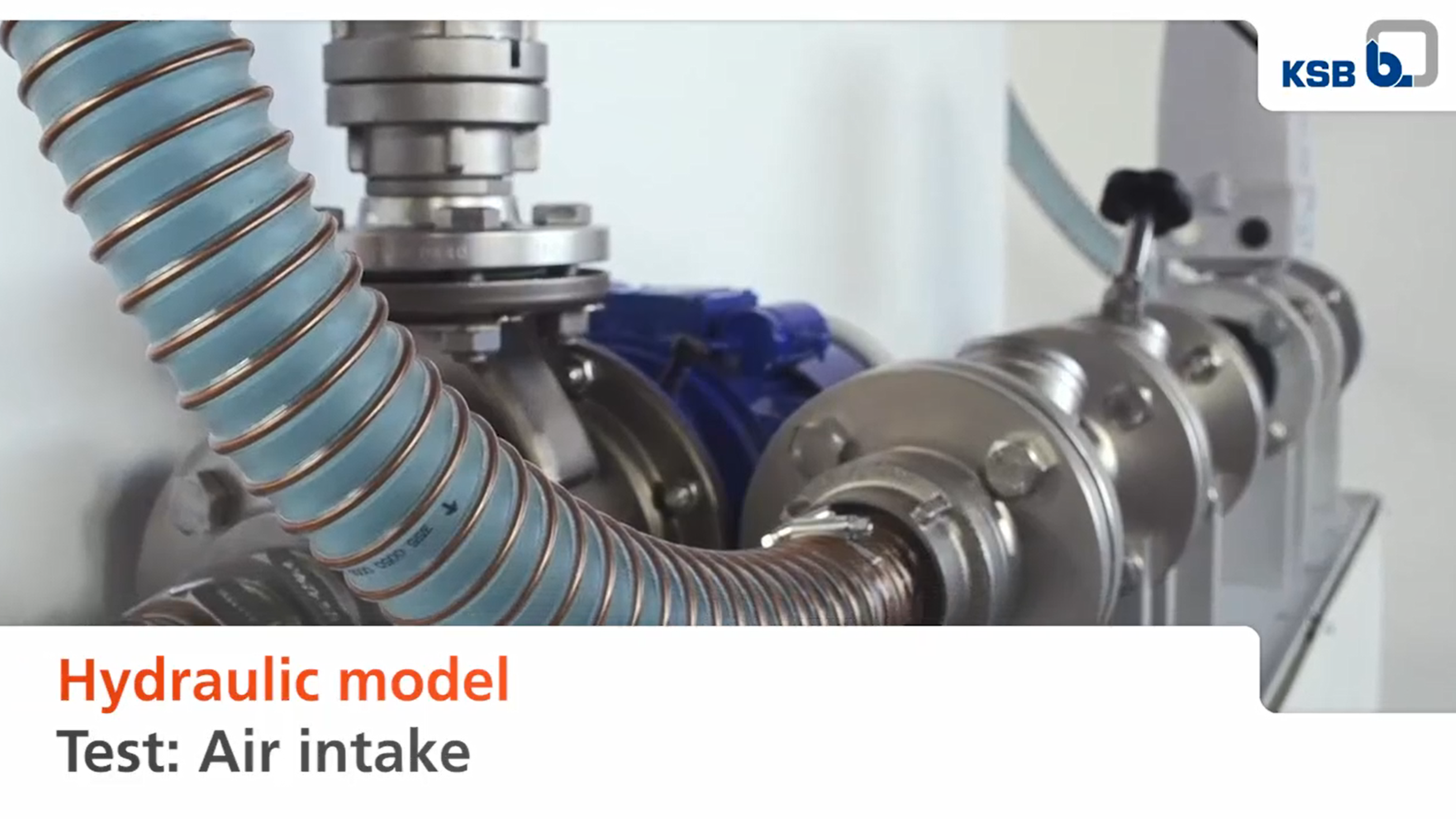
"Air intake" hydraulic model testing: How to prevent gas bubbles in pumping systems.
KSB has started comprehensive model testing to investigate options of reducing air intake.

Preventing air ingress by using a deflector and balcony
Conclusion of the "air intake" model testing
Model testing by KSB: Thinking small, building big!
Suitable products
Amarex KRT
Horizontal or vertical single-stage submersible motor pump in close-coupled design, with various next-generation impeller types, for wet or dry installation, stationary or transportable version, with energy-saving motor and models for use in potentially explosive atmospheres.
Etanorm/Etanorm MyFlow/Etanorm Pro
Single-stage volute casing pump in back pull-out design, with ratings and main dimensions to EN 733, with IEC-compatible power drive system comprising PumpDrive 2 and KSB SuPremE® motor or PumpDrive 3 (efficiency class IE4/IE5 to IEC TS 60034-2-3:2016) and motor-integrated frequency inverter. The pump is designed with replaceable casing wear rings, closed radial impeller with multiply curved vanes, single mechanical seal or double mechanical seals to EN 12756, shaft equipped with replaceable shaft protecting sleeve in the shaft seal area. The back pull-out design allows the coupling, bearing brackets and impeller to be dismantled without the need to disconnect the pump casing from the piping. Motor mounting points in accordance with IEC 60072, envelope dimensions in accordance with DIN V 42673 (07-2011). ATEX-compliant version available. Well ahead of the ErP Directive's efficiency requirements.
Multitec
Multistage horizontal or vertical centrifugal pump in ring-section design, long-coupled or close-coupled, with axial or radial suction nozzle, cast radial impellers and motor-mounted variable speed system. ATEX-compliant version available.